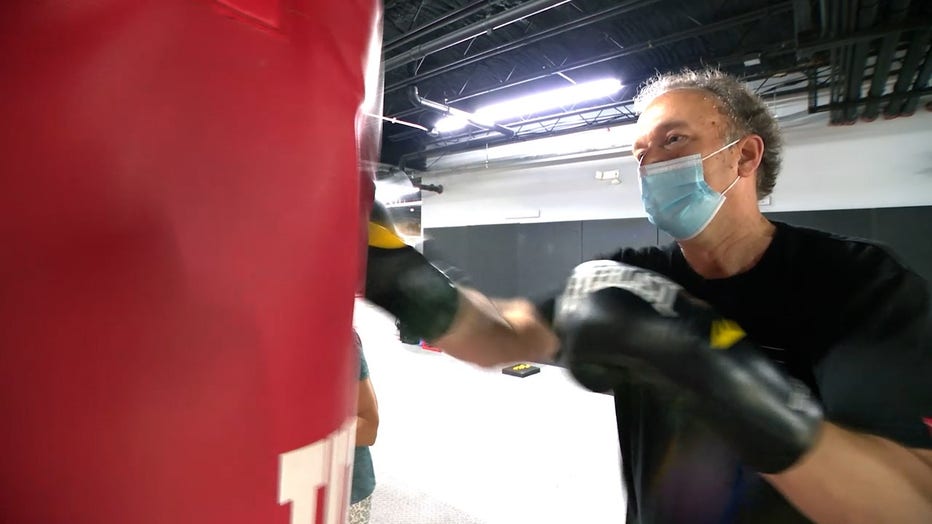Motion sensors confirm boxing may help ease Parkinson's disease symptoms is some patients

Does boxing really help with Parkinson's?
Across Georgia, people living with Parkinson's Disease are turning to exercise to help manage their symptoms. One of the most popular options is non-contact boxing. A new study using high-tech movement sensors shows the sport may help improve balance and walking for patients.
ATLANTA - Since his diagnosis with Parkinson’s disease in 2019, Brian Soucy has been doing everything he can to maintain his balance and core strength.
He practices Tai Chi with his wife, Sharon, at their Canton home, balance work they started doing together shortly after Soucy learned he had the disorder.
"We heard that that helped," Soucy says. "At that point, I was still a little bit in disbelief, but I said, okay, well, it can’t hurt."
Now 67, the vice president of engineering for a chemical manufacturer, has been living with the brain disorder that can cause uncontrolled movements, and problems with balance, coordination and stiffness for 4 years.
"It started with a little tremor in my left hand, just really the two small fingers in my left hand," Soucy says.
Parkinson’s is progressive, with symptoms that can worsen over time.
Soucy says the more he researched, the more discouraged he became.
"It’s a neurodegenerative disease, and there’s no cure," Soucy says. "And you can take medications for the symptoms, but it doesn’t really slow the progression."
But, Soucy believes boxing may be his best weapon to slow down his progression.
Two years ago, he started coming to the Center for Movement Challenges, taking classes with program director Troy Lyons-Lee.
"Brian is one of the hardest workers at our facility," Lyons-Lee says. "He shows up, and he shows out!"

Brian Soucy of Canton, Georgia, who has Parkinsons Disease, boxes at the Center for Movement Challenges.
Soucy takes non-contact boxing classes in which you throw a lot of punches, but do not get punched back, designed for people with Parkinson’s and other movement disorders.
Lyons-Lee says boxing offers an intense workout that requires focus and multitasking.
"You’re thinking about your stance," he says. "You’re thinking about your footwork, your hand positioning, your foot positioning. And then you’re trying to memorize all the combinations. So, if I said three to four or five, most people wouldn’t know what I was talking about, right? So, it takes time to learn those different combinations."
There are now hundreds of boxing for Parkinson’s programs like this one across the U.S., and the research into the benefits is promising.
"It’s a great program. It’s made a difference for me, both physically as well as well as mentally," Soucy says.
But how much of a measurable difference can boxing really make?
To find out, in June of 2022, Soucy and about 30 Center for Movement Challenges boxing program participants wore high-tech functional motion sensors developed by BioMech Lab to measure their gait and balance, before and after 8 weeks of boxing for Parkinson’s training.
"I think out of the 30 or so odd people that took a part in the study, we’ve seen an increase in gait and about 3% and in balance at 9%," Lyons-Lee says.
BioMech says the patients who experienced improvement, which included just over half of the group, saw a 24% overall improvement.
Brian Soucy is now using the system at home to track his progress, and he’s convinced boxing is helping him.
"I’ll do the boxing as long as I’m able to, as long as I’m able to keep going," he says.

